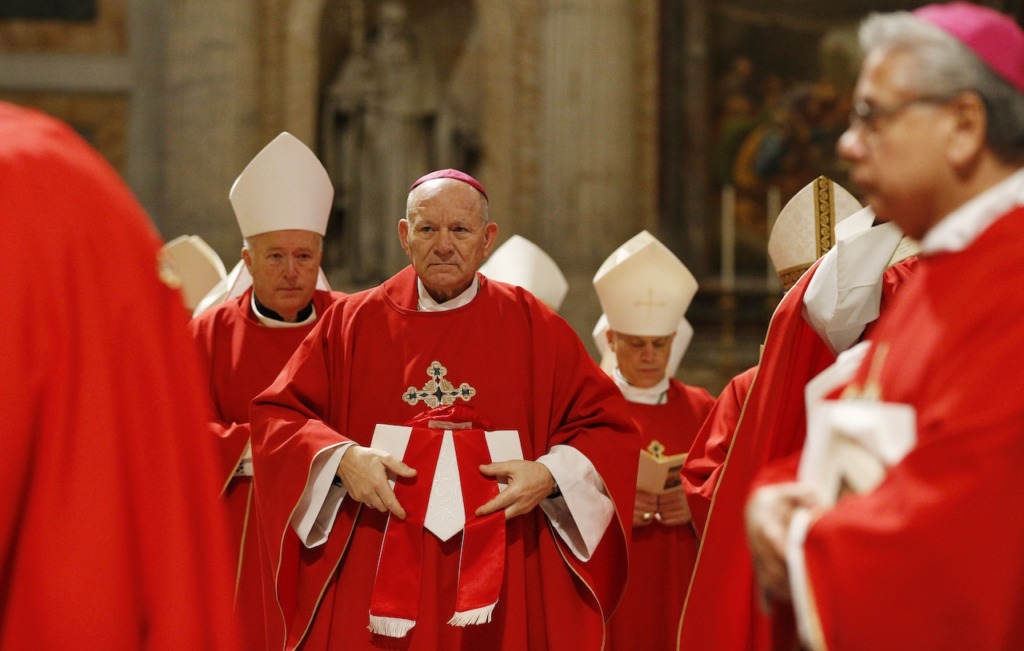SANTA ROSA, Calif. (OSV News) – The Diocese of Santa Rosa filed for bankruptcy March 13, days after its bishop finally concluded the decision was necessary in order to address potentially 200 new claims brought against the diocese by survivors of child sexual abuse.
Bishop Robert F. Vasa said in a March 10 statement posted to the diocese’s website that after “months of careful and prayerful consideration” – including consultation with the diocese’s priests, the diocese’s finance council, and other professionals retained by the diocese, “it was clear that such an action was necessary.”

Bishop Vasa pointed out the diocese faces at least 160 new claims against it as a result of California legislation opening up a three-year window in the statute of limitations, from Jan. 1, 2020 to Jan. 2, 2023, that allowed survivors of child sexual abuse to file lawsuits within that time frame. He acknowledged those claims could potentially exceed 200.
“These cases are too numerous to settle individually and so they have accumulated until the closing of the three-year window,” he said.
The March 13 petition to file for Chapter 11 bankruptcy submitted by Bishop Vasa before the U.S. Bankruptcy Court for the Northern District of California informs the court the diocese has between $10 million to $50 million in assets and faces $10 million to $50 million in liabilities, and potentially 200 creditors or more to satisfy.
Bishop Vasa said the diocese faced similar circumstances in 2003, “but with many fewer cases.” He pointed out the diocese at the time sold excess property, borrowed funds, and paid out “approximately $12 million dollars with an additional $19 million coming from insurance.” Since then, he said, it has paid “an additional $4 million on individual settlements.”
“Now, facing at least 160 new cases, with excess property depleted, with insurance for many of the years either nonexistent or exhausted it is impossible to see any way forward without recourse to the bankruptcy protections our country makes available,” he said.
The bishop outlined two important goals for the Chapter 11 bankruptcy filing: first, to “carefully evaluate and compensate” all sexual abuse claims against the diocese “fairly and finally” under the supervision of the bankruptcy court, and second, to provide a way for the diocese to continue its charitable ministries.
Because the Santa Rosa Diocese was organized as a “corporation sole,” he said the only legal entity filing for bankruptcy is “the Roman Catholic Bishop of Santa Rosa.”
The diocese’s parishes and Catholic schools are not parties to the filing. However, the bishop’s note indicated that whether that remains the case depends on the bankruptcy proceedings.
Bishop Vasa said while he has been anticipating the need to file for bankruptcy, “it is most distressing to have the duty of actually proceeding with this filing.”
“Nevertheless, I remain convinced that it is a necessary step for the Diocese and the only way to resolve the claims which have been presented against it,” he said.
However, the Survivors Network of those Abused by Priests advocacy group, or SNAP, criticized the bankruptcy filing in a March 14 statement, arguing the diocese is “shielding itself from true accountability and abusing court rules to keep the public and parishioners in the dark about the true scope of clergy abuse in their area.”
“California’s Child Victims Act aimed to give survivors access to the truth and a route to justice, but this proposed bankruptcy strategy would restrict a victim’s ability to obtain compensation and, more importantly, would bar them from obtaining the Bishop’s confidential records which would reveal the scope of previous and present cover-ups,” the group stated.
In his March 10 statement, Bishop Vasa maintained the diocese and its various parishes “continue to be vigilant in fostering safe environments for all of our children, in screening all employees and volunteers and in periodically reviewing our Diocesan Policy for the Protection of Children and Youth.”
“These things have been done for the past twenty years and it is our prayer that children are actually kept safer now than in the past and that all in our pews are more aware and vigilant about potential risks,” he said. “Nevertheless, we are deeply saddened that so many have endured abuse in the past and that the scourge of child sexual abuse is a part of our diocesan history.”
Bishop Vasa said he hoped the bankruptcy process would help provide “for those who have come forward and who are yet to come forward at least some compensation for the harms they have endured.”

